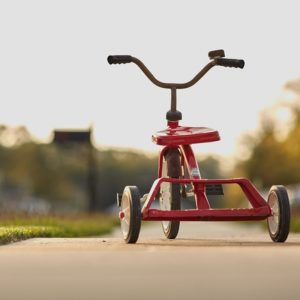 You have a memory system dedicated to storing the stories of your life. This episodic memory system tends to steadily leak. In general, you lose 5% of your event memories every year. This is the reason your childhood memories fade. They used to be clear but little by little they disappear.
You have a memory system dedicated to storing the stories of your life. This episodic memory system tends to steadily leak. In general, you lose 5% of your event memories every year. This is the reason your childhood memories fade. They used to be clear but little by little they disappear.
The good news is there is a cure. You can improve your episodic memory by looking at your family photos. Our brains love family photos. They are snapshots in time that we can encode into an even more condensed memory.
Photo Albums
Sometimes I think my childhood was a different world because all the photos of when I was young were in black and white. I feel like that was the reality, rather than just the limits of technology.
Looking at your photos will help you keep your memories from fading. And it keeps them more accessible too.
There are two terms related to memory you should know: available and accessible. Available means that it is in there somewhere. Accessible means you can find it.
I have a shed filled with junk. There are things that should be throw out, things that have been thrown out but someone in the family retrieved, things that are useful and things that might be useful some day.
Memory is like a shed. If I need a tool, I know that it is available. I remembering once having had such an item before. And I’m pretty sure it is in the shed. But I’m also sure that it is buried in the pile of other stuff and is not accessible to me.
“Memories that are inaccessible are as useless as if you didn’t have them.”
My shed is hopeless but your brain isn’t. You can make your memories more accessible. Here’s how.
Three Tips
First, retrieve often. Think of retrieving as path building. The more you walk the same path, the deeper the rut you will create. Beating a path into the woods is hard the first time you venture forth. But it gets easier with each excursion. Beat a path to your memories. Retrieve the ones you want to keep over and over.
Second, retrieve in the same order. It is easier to beat a path if you follow the same route. It is easier to keep things in memory is you retrieve them in the  same order. Your brain soon expected that after you’ve done steps one and two, you’ll want to do step three. It will anticipate your path the more you do things the same way.
same order. Your brain soon expected that after you’ve done steps one and two, you’ll want to do step three. It will anticipate your path the more you do things the same way.
Third, adjust your retrieval schedule as needed. The goal is to keep things in memory. Memories are like birds: they tend to fly the coop. So check to see if it is there. If it is, wait a little longer to check in on it. Expand your retrieval schedule. If one day works, try two days. If it is there for two days, check back in after 3 days.
If the memory has escaped, relearn it and shorten your retrieval schedule. If two days is too long, retrieve every day or every 30 hours, etc.
Expand-shrink your retrieval schedule as needed. You’ll some things stay around for a long time and others require much more attention to keep them in.
To keep things in memory, retrieve often, in the same order and as needed.